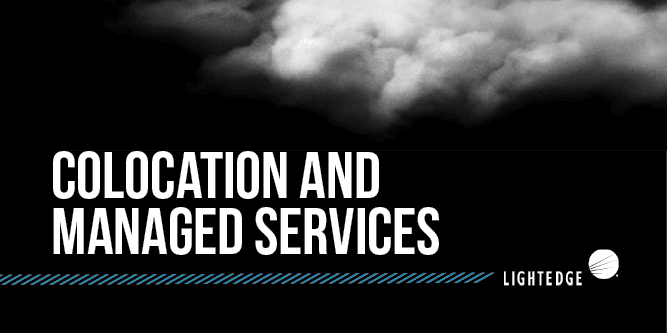Types of Vulnerabilities in Network Security
August 13, 2020

Lightedge
Author

As many organizations continue to hold network security top of mind, entire IT teams are focused on the tools and technology needed to ensure the utmost protection for their organizations. While this is an important concentration, another key area to consider are the lurking risks that could undermine all those security efforts.
By understanding what puts your network in danger and exposes you to vulnerabilities, you can then move forward and take the proper security precautions that make sense for your specific situation.
There is a variety of network security threats that businesses should be aware of to guarantee the continuous protection of their systems, software, and data. Cyber criminals do not discriminate on the size of company or the industry you are in. With that being said, anyone is a target.
In fact, according to Verizon’s 2019 Data Breach Investigation Report 43 percent of breaches involved small business victims, 15 percent of breaches involved healthcare organizations, and 10 percent of breaches involved the financial industry.
No matter what your organization does, there are threats ready to attack your network. Now is the time to get ahead of that. Check out this blog to learn about the types of vulnerabilities in network security and actions you should take to remain secure and compliant.
Network Security
Network security is a broad topic that can mean many things. From policies and practices that an organization puts in place to the monitoring of unauthorized access, there are many components in a solid network security plan.
The overall goal of network security remains the same, however – to prevent unauthorized access and malicious actors from entering and causing a breach in security. The first step to protecting a network is to understand the threats that could bring it down.
Network Vulnerabilities
Network vulnerability is a weakness or flaw in software, hardware, or organizational processes, which when compromised by a threat, can result in a security breach.
Attackers are motivated by a variety of things. Verizon reports that 71 percent of breaches are financially motivated, while 25 percent of breaches are motivated by the gain of strategic advantage or espionage. Some of the ways attackers can accomplish their goal is through:
- Malware
- Viruses
- Spyware
- Phishing
- Distributed Denial of Service attacks (DDoS)
Understanding what each of these vulnerabilities are and how you can stop them is your next step to securing your network. Let us get started!
Malware
According to Forcepoint, malware is the collective name for a number of malicious software variants, including viruses, ransomware, and spyware. Shorthand for malicious software, malware typically consists of codes developed by cyber attackers, designed to cause extensive damage to data and systems or to gain unauthorized access to a network.
Malware is typically delivered in the form of a link or file over email and requires the user to click on the link or open the file to execute the malware.
Malware makes itself known in a number of different ways. From demanding a ransom to stealing sensitive personal data, attackers are becoming more and more sophisticated in their methods. The following is a list of some of the more common malware types and definitions.
Viruses
Computer viruses are a type of malware that earned their name because of how they spread by “infecting” other files on a disk or computer.
Viruses are attached to a system or host file and can lay dormant until inadvertently activated by a timer or event. According to the National Institute of Standards and Technology (NIST), the first computer virus, a boot sector virus called “Brain,” was developed in 1986.
As soon as a virus enters your network system, it will immediately go to work in replicating itself with the goal of infecting as many networked systems and poorly protected computers as possible. Transmission of viruses and worms is often done by exploiting software vulnerabilities. Once they’ve found their niche in your system, they spread like wildfire affecting as many system components and users as possible.
A common misconception about viruses is that it requires user interaction to activate. This is actually the primary difference between viruses and worms. Although viruses do require the activation of their host file in order to execute, this may be part of an automated process. In contrast, once a worm has breached a system, it can execute, self-replicate, and propagate freely with no trigger.
Spyware
Another network security vulnerability is spyware. Spyware does just what it says. It spies on what you are doing at your computer. It collects data such as browsing habits, location data, and login information.
Spyware is considered malware because users are unaware of it. The only intent of spyware is maliciousness. Spyware collects and sells your data to third parties, typically cyber criminals, with no regard for how the data will be used. Spyware may also modify specific security settings on your computer or interfere with network connections.
The rise of mobile computing has seen an explosion of spyware that tracks user behavior across devices and physical locations without their consent.
If your spyware infection is working as designed, it will be invisible unless you’re technically savvy enough to know exactly where to look. You could be infected and never know. But if you suspect spyware, here’s what to do.
- The first order of business is to make sure your system has been cleaned of any infection so that new passwords are not compromised. Get yourself a robust cybersecurity program with a reputation for aggressive spyware removal technology.
- If stolen information is sensitive or involves the collection and transmission of images, audio, and/or video, you should contact local law-enforcement authorities to report potential violations of federal and state laws.
- Finally, monitor any fraudulent transactions and potentially place a freeze on bank cards to prevent any further activity.
Phishing
According to Verizon’s report, 32 percent of breaches in 2019 involved phishing. Phishing attacks are a form of social engineering that is designed to steal sensitive data such as passwords, usernames, and credit card numbers.
These attacks impersonate real websites, banking institutions, and personal contacts that come in the form of instant messages or phishing emails designed to appear legitimate. Once you hit reply or click the embedded URL in these messages, you will be prompted to use your credentials or enter your financial details which then sends your information to the malicious source.
It’s best to use care when clicking on the links in email. If you’re unsure if the message is legitimate, it’s best to reach out to the sender and confirm. If you do not know who the sender is, then notify your security team of the suspicious message.
If you see that there are misspelled words in the email, it’s best to air on the side of caution. If you are suspicious about the source of the email but want to investigate further, make sure not to reply to the email directly.
Also, consider purchasing an anti-phishing filter which will prevent access to malicious sites even if your employee accidentally or deliberately clicks on a bad link.
Distributed Denial of Service Attacks
DDoS attacks continue to rise in complexity, volume and frequency, threatening the network security of even the smallest enterprises.
DDoS attacks occur when servers and networks are flooded with an excessive amount of traffic. The goal is to overwhelm the website or server with so many requests that the system becomes inoperable and ceases to function.
DDoS attacks can also originate from tens of thousands of networked computers that are not compromised. Instead, they are either misconfigured or simply tricked into participating in a botnet, in spite of operating normally.
DDoS attacks are becoming more common. In the first part of 2019 alone, TechRepublic saw a whopping 967 percent increase in volumetric attacks designed to clog networks and deny access to resources.
Take Advantage of Lightedge’s Secure Network
When asked about our differentiators, the first answer is always – our network. Lightedge designs all of our purpose-built facilities and services around connectivity first. That means unparalleled scale, redundancy, speed, and uptime for your business and the clients you serve.
We spent over two decades perfecting our network and infrastructure to be the most scalable, redundant, and secure in the US. Today, Lightedge has narrowed our focus to supporting the most highly regulated organizations with our Tier III data centers and compliant cloud offerings. Although, one thing has stayed constant – everything we do is built around our unrivaled network.
We understand your top priorities when it comes to connectivity:
- Your applications are always up.
- Your applications are always fast for end users.
Have confidence that Lightedge has built every inch of our network to deliver you just that.
DDoS attacks are continuing to grow in frequency and complexity. As the leader in connectivity, Lightedge takes a proactive stance to deliver the top network safeguards every organization should have. Our internet is inherently built to handle mission-critical, compliant workloads. On top of that includes security. We offer two tiers of DDoS Protection to upgrade your Lightedge Internet experience and protect against the rest.
With DDoS Protection, it’s recommended to have these safeguarding measures in place prior to an attack ever taking place so that we’re able to mitigate the situation right away. Interested in staying ahead of DDoS threats? Let’s Get You Setup.
We do understand that it may be too late in some instances and you may already be in emergency, reactive mode. If your company is currently under attack, Lightedge can step in to assist and work with you to figure out a solution. If you’re concerned or experiencing issues, contact us here immediately at 1.877.771.3343.
Related Posts:
- Fundamentals of Network Security
- Antivirus: Not Just By Prescription Anymore
- DDoS Attacks: Your Guide to Staying Protected
- Orchestrating Network Security Policies to Prevent a Data Breach
- Top Network Security Threats and How to Prevent Them
- Three Solutions to Protect Against Insider Threats
- Backups and Redundancy: Why Your Business Needs Both
- How to Mitigate and Respond to Data Breaches
- Proven Security Techniques for Data Protection in the Cloud
- Security for Remote Workers: A COVID-19 Crisis Planning Guide
- What is Edge Computing and How Does it Impact Me?


